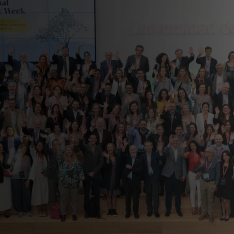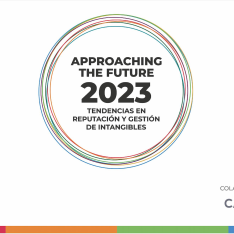Loading...
Corporate reputation is one of the most relevant non-financial indicators for business management and one of the most valuable assets. Together with corporate brand, it represents a primary risk for organizations, given its direct impact on business.
Reputation is grounded in the excellent management of key dimensions of corporate behavior: financial performance, innovation, citizenship, workplace environment, leadership, ethics, and product and service quality.
Frequently Asked Questions
What is corporate reputation?
Corporate reputation is a strong and enduring sentiment of admiration, respect, esteem, and trust—essentially, the recognition granted by each stakeholder group. It encompasses the emotions, opinions, perceptions, and judgments that stakeholders form over time as they compare their expectations with their actual experiences with the organization. Reputational risks, therefore, refer to any factors that may condition, damage, or negatively impact an organization’s reputation.
Why is managing corporate reputation important? What does having a good reputation mean?
Reputation is a critical element for a company’s success. A strong corporate reputation fosters trust, admiration, and respect. This, in turn, promotes supportive attitudes, such as improved stakeholder relationships, talent attraction and retention, brand strengthening, societal value generation, better financing access, and reduced reputational risk, among others. Conversely, a poor or lost reputation can lead to reputational risk, causing rejection and ultimately reducing company value. This will significantly affect the organization’s legitimacy and credibility.
For this reason, reputation is considered one of the most valuable non-financial resources in the business world. It directly impacts business, and organizations must understand stakeholders' perceptions and expectations to manage it effectively.
How is corporate reputation created? What are its components?
Reputation develops on its own. In other words, we all have a reputation simply by existing and interacting with others. Since it is directly linked to third-party perceptions, corporate reputation is an intangible asset that companies neither own nor can directly control. However, it is closely connected to stakeholders’ knowledge or experience regarding corporate behavior.
The RepTrak® measurement model, which Corporate Excellence helped develop, defines seven rational dimensions: product and service offerings, innovation, work environment, integrity (ethics and transparency), citizenship (social investment and environmental care), leadership (quality of management), and financial performance. These are the areas where organizations can and should work to build a strong, lasting reputation.
What are reputational risks?
A reputational risk is any situation where inappropriate corporate behavior negatively affects stakeholder expectations to a significant degree, leading to responses that seriously undermine corporate reputation—and, consequently, company value. Reputational risks almost always arise as a result of other risks: credit, market, structural and liquidity, operational, strategic and business, or even technical, for example.
Today, reputational risks and damage to corporate brands are among the top risks companies face. Thus, beyond building a good reputation, organizations must simultaneously work on risk policies to identify, measure, and evaluate all internal factors that could weaken it, with the corresponding loss of future business.
Examples of Reputation and Reputational Crisis – Practical Cases
The case of Odebrecht is a perfect example of how reputation is difficult to build and very easy to lose if things aren’t done right. Reputation directly impacts a business’s survival.
Public stances on controversial issues and the impact of social media opinions have also challenged the reputations of companies like Tous and BudLight at specific times. Reputation management also extends to individuals and can be analyzed in CEOs or public figures such as Zelensky.
Explore these and many more cases in our Practices in Action.
Featured Resources







